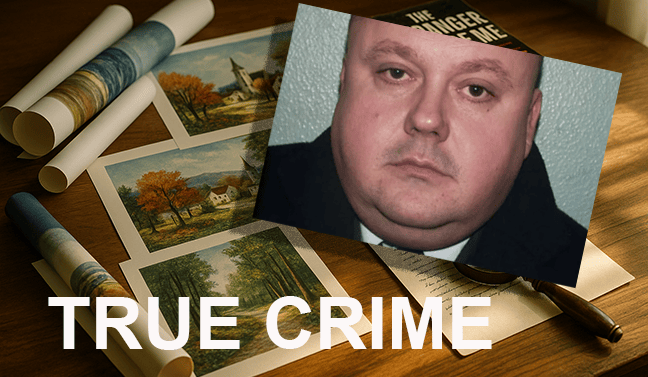Storysmith | • True Stories AND Creative Inspiration | Follow Me




THE BLACK PANTHER: THE LIFE AND CRIMES OF DONALD NEILSON
Prologue: The Man in the Shadows
He moved like smoke. A man with military precision, a balaclava masking dead eyes, and a shotgun sawn short enough to make murder portable. The papers would later call him “The Black Panther.” But behind the headlines was Donald Neilson — ex-soldier, father, thief, and killer. Cold. Calculated. And ultimately, cornered.
Before Lesley Whittle’s body hung lifeless from a steel wire deep in a Staffordshire drainage shaft, Donald Neilson was just a ghost on the periphery — a prowler, a burglar, an armed man in the night. But by the time Britain knew his name, five people were dead, a nation was gripped with fear, and one of the most disturbing crimes in British history had left its scar.
Part One: The Quiet Man from Bradford
Born Donald Nappey in August 1936, he didn’t much care for the surname. He changed it to Neilson sometime after marrying, trying to bury the echoes of a difficult past. National Service had given him discipline — too much, perhaps. He served in the Parachute Regiment, and when he left, he didn’t so much return to civilian life as tolerate it.
He tried carpentry. Tried normality. Tried raising a family in Bradford. But he couldn't quite shake the need for control. His wife, Irene, knew him as a strict father, proud, even obsessive. He kept their house spotless. He trained their daughter to fire a rifle in the garden. He ironed his shoelaces.
The world he built was one where order reigned. But order, to Neilson, meant fear.
In the late 1960s, Neilson turned to burglary — not as a desperate man, but as a tactician. He studied targets, logged routines, cut phone lines. He wore black. Camouflage paint. Moved like a soldier. His crimes were silent, surgical. Hundreds of break-ins — rarely a trace.
But something shifted in the early ‘70s. Maybe it was frustration, or the thrill of escalation. Maybe it was rage, because Donald Neilson began taking lives.
Part Two: The First to Die
In 1971, Neilson broke into a sub-post office in Heywood, Lancashire. It was his usual method: masked, armed, swift. But this time he encountered Sub-postmaster Donald Skepper. There was a struggle. Neilson shot him dead.
Over the next three years, more postmasters would die:
Derek Astin, gunned down in Harrogate in 1974.
Sidney Grayland, shot dead in Langley, near Oldbury, that same year.
Leslie Richardson, in Swansea, was shot but survived, though permanently disabled.
Neilson wasn’t just a thief now. He was a murderer with a playbook — in and out in minutes, masked, ruthless. He stalked post offices, studied floorplans, sometimes weeks in advance. The police began connecting the dots. A masked gunman. A ruthless method. A dark, nimble figure escaping on foot or in a car — always just out of reach.
The press gave him a name: The Black Panther. It stuck.
But Donald Neilson wasn’t finished.
Part Three: The Girl in the Shaft
By 1975, Neilson had plans for something bigger. Robbery wasn’t enough. He wanted a ransom. A big one. For that, he needed a high-profile victim.
He found her in Lesley Whittle — a wealthy 17-year-old heiress from Highley, Shropshire. Her father had died and left her a trust fund. Neilson saw opportunity.
On the night of January 14, 1975, he broke into the Whittle home, crept into her room, and forced her out of bed at gunpoint. He made her write a note. Then he drove her to Bathpool Park, Kidsgrove, Staffordshire, and lowered her into a disused drainage shaft — 60 feet deep. She was kept in the darkness, chained, with a loop of wire around her neck, fastened to the platform.
He demanded £50,000 from her family. Left notes. Cryptic instructions. A complex system of dead drops. But things went wrong. Communications broke down. Police missteps. Confusion. A chase that fizzled into nothing.
When police finally found her body on March 7th, 1975, she’d been dead for weeks. The wire had tightened. Either through a fall or a panicked move, she was strangled slowly, alone in the dark. The shaft had become her tomb.
The country was horrified. The post office robber was now a kidnapper and child killer. Panic turned to fury. Pressure mounted. But Neilson, as ever, had vanished.
Part Four: The Patrol Car and the End of the Road
For months he lay low. Until the night of December 11, 1975, in Mansfield Woodhouse, Nottinghamshire.
It was chance — a routine patrol. Two officers spotted a man behaving oddly. They stopped him. Something felt off. He gave a false name. The man suddenly drew a sawn-off shotgun from a shopping bag.
In the struggle, PC Stuart Mackenzie was shot in the chest but survived thanks to his body armour. PC Gerald Speed wrestled Neilson to the ground.
When they searched him, they found his weapons, his kit. And his face — now unmasked — matched police artist impressions. Inside his home, they found maps, photos, equipment, and a chilling set of logs tied to his crimes.
Part Five: The Trial and Aftermath
At trial in July 1976, Neilson showed no remorse. No apology. He was sentenced to life imprisonment for four murders, kidnap, blackmail, and robbery. The judge made it clear: he should never be released.
He remained behind bars for the rest of his life, transferred between high-security prisons.
In 2008, a judge reaffirmed the sentence: “Whole life tariff. You will die in prison.”
He did — on 17 December 2011, aged 75, after being taken ill at Norwich Hospital.
Epilogue: A Legacy of Terror
Even among Britain’s most feared criminals, Donald Neilson stands out — not just for the scale of his crimes, but for the meticulous, military nature of them. He wasn’t erratic. He wasn’t desperate. He was calculating, detached, and deeply dangerous.
What haunts most is Lesley Whittle — a girl who did nothing but inherit money. Her death was not impulsive; it was designed, caged by a man who thought logistics would get him rich.
Instead, it left a family broken, a nation shaken, and a name — The Black Panther — that still sends a shiver.

